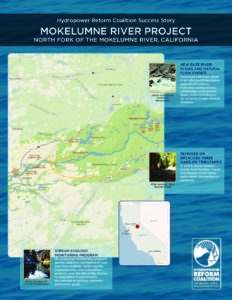Rapid diversification in Salmon and Steelhead Populations Following Dam Removal
John McMillan returns with a guest column about the ongoing recovery of the Elwha River.
It’s been eleven years since the Elwha Dam (the lower of the two dams on the Elwha, located at river-mile five) was removed.
I still remember the day the heavy equipment started to roll, and the dam started to fall.
I was perched on a boulder overlooking the dam. The diesel motors roared to life and large machines began to chip away at the top of the concrete slab.
It would be a few more years before both the Elwha Dam and Glines Canyon Dam (located further upstream at river-mile 14) would be fully deconstructed, allowing salmonids free passage back into the Elwha River’s sacred headwaters.
Salmonids have now recolonized substantial chunks of their former habitats in the Elwha River. After spending most of the past decade monitoring their movements, distribution, survival, growth, and abundance, scientists are starting to publish their findings.
Indian Creek and the Little River
Today, my work focuses on salmon and steelhead in two smaller tributaries to the Elwha River, Indian Creek and Little River. Both are located above the former Elwha Dam, but below Glines Canyon Dam. They are the first two tributaries that enter the Elwha River above the former Elwha Dam. They enter the Elwha’s mainstem only a few hundred yards from one another.
Despite their proximity, they are about as different as one could picture – like Ah’nold and Danny in Twins. Indian Creek is formed by Lake Sutherland. It is low gradient, warm, and looks more like a spring creek. Little River, on the other hand, is formed by glaciers, runs very cold, and is quite steep. Most of its middle and upper sections are confined by a deep, bedrock canyon.
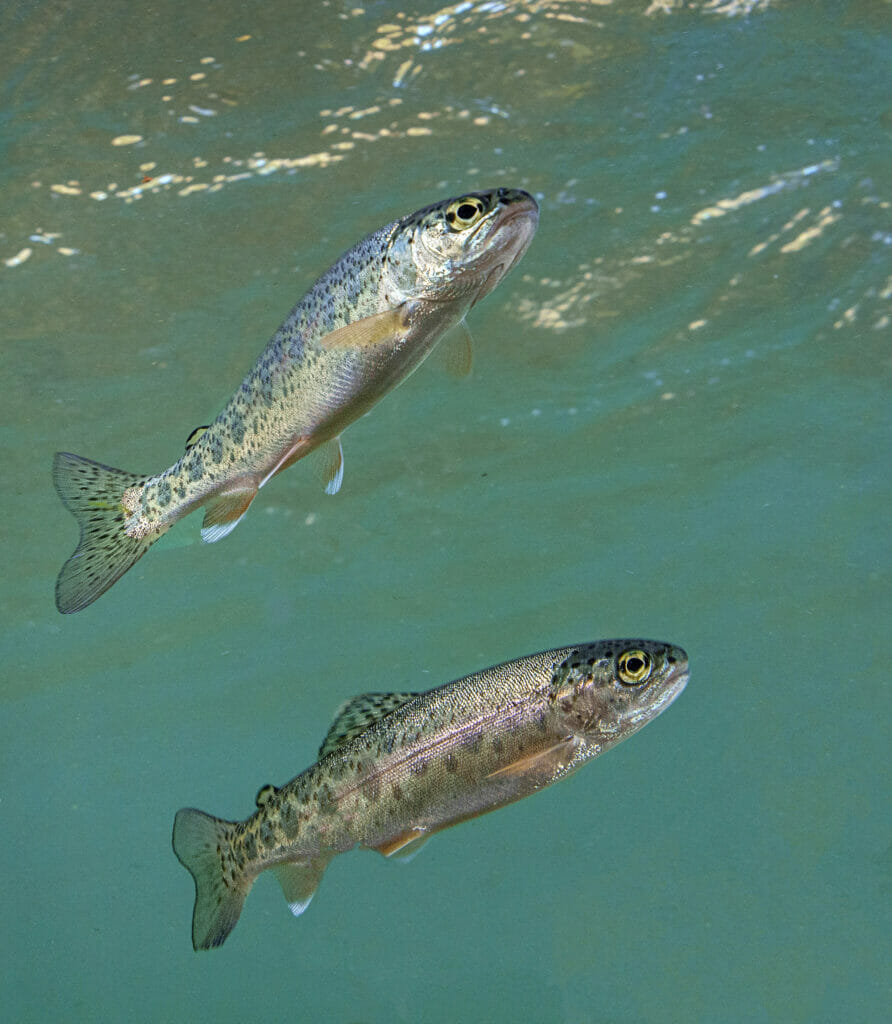
Elwha River steelhead parr. Image: John McMillan/The Conservation Angler
The striking contrast made them ideal candidates for understanding how salmonids respond to dam removal and whether underlying differences in habitat conditions give rise to differences in salmon and steelhead life histories.
The Lower Elwha Klallam Tribe and NOAA have already published one paper (Liermann et al. 2017) on Indian Creek and Little River. In that analysis, Liermann et al. found the warmer, lower-gradient creek produced substantially more coho salmon smolts and earlier outmigrating coho salmon fry than the colder stream.
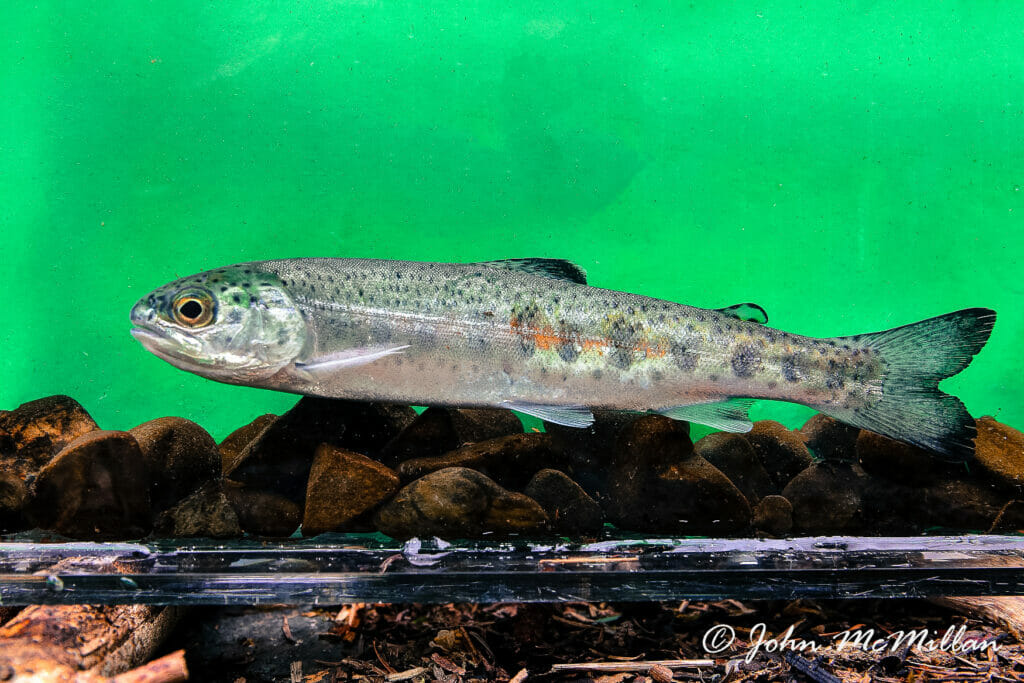
Image: John McMillan/The Conservation Angler
A month ago, Stuart Munsch with NOAA (and several other co-authors, including myself), published a follow-up piece to the original work by Liermann et al. (2017). The study expanded the focus to include Chinook salmon and steelhead, in addition to coho salmon, and used data from smolt traps, PIT tags (passive integrated transponder tags), and electrofishing to compare the outmigration timing, age structure, and length of juveniles between the two streams.
So, let’s cut to the chase and dig into the results.
Salmon and Steelhead Respond to Diverse Habitat
First, juvenile coho, Chinook, and steelhead were found in each creek in all years of the study, but overall, juveniles of all species were more abundant in Indian Creek except for 2020, when there was a sharp increase in the number of juvenile steelhead and Chinook in Little River. The difference in juvenile abundance was largely driven by age-1+ coho.
Second, juveniles outmigrated approximately 25 days earlier in warmer Indian Creek and the timing of migration was more protracted relative to the shorter, pulsed migrations observed in the cooler Little River.
Third, the age of juveniles at outmigration differed between the two tributaries. While both supported multiple age classes, Indian Creek supported proportionally older coho and steelhead, while most of the coho outmigrants in Little River were smaller, age-0+ individuals. The coho results are consistent with what we documented previously in Liermann et al. (2017).
In summary, the lower gradient, warmer stream generally supported a greater abundance of older juveniles and they migrated earlier and over a more protracted period. However, Little River produced an abundance of juvenile steelhead and Chinook in 2020, suggesting that colder water does not always equate to lower levels of productivity.
Reestablishing Steelhead and Salmon Following Dam Removal
These observations may not seem groundbreaking, but they do have implications for steelhead and salmon recovery following dam removal. Our results suggest salmonids can become productive in a relatively short period of time after dam removal once they are able to reconnect to their historic spawning and rearing habitat. And that variation in habitat conditions can quickly give rise to life history diversity. This bodes well for other dam removal projects, such as the Klamath River basin.
Additionally, while both tributaries we studied support a relative abundance of spawning adult coho, Chinook, and steelhead, Indian Creek appears to provide conditions that are more favorable for older and larger juvenile coho. This is likely partly related to the presence of Lake Sutherland and beaver ponds, neither of which are present in Little River. In Indian Creek, some juvenile coho are rearing in the headwaters lake and are achieving very large sizes (up to 11” in length!), while others are rearing in a series of beaver ponds just below the lake.
Basically, the upper portion of Indian Creek is like one big pool, and coho salmon love pools. It’s a match made in heaven.
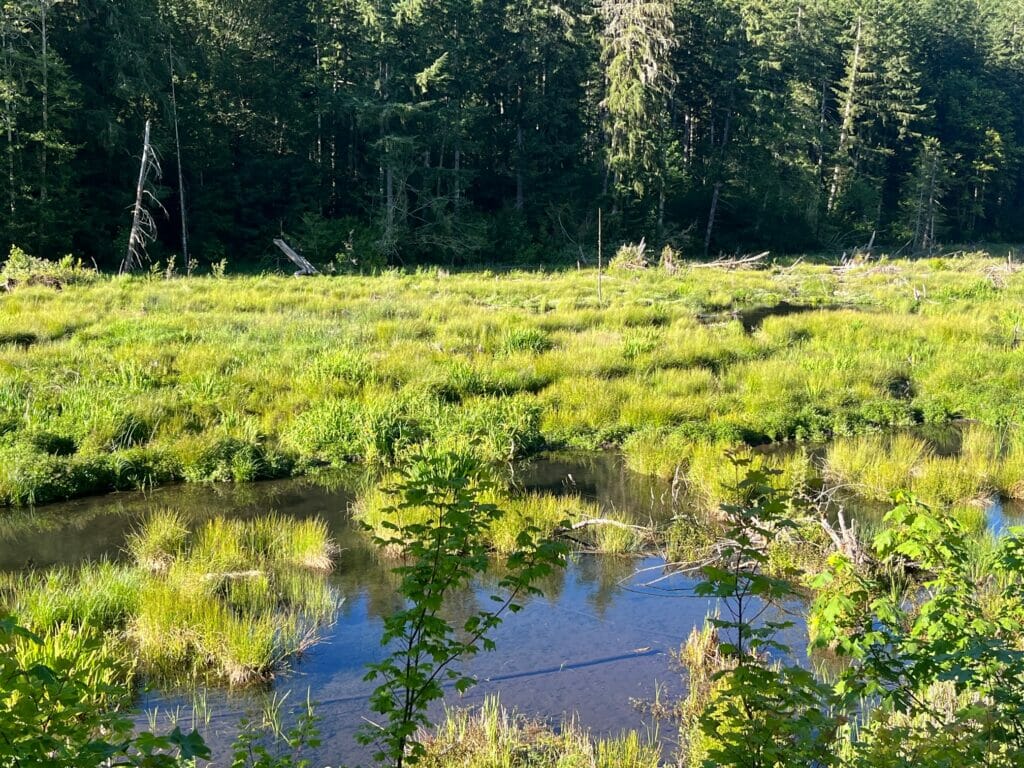
Upper Indian Creek in Washington’s Elwha River watershed. Image: John McMillan/The Conservation Angler
In contrast, Little River supports relatively few older juvenile coho, with our sampling suggesting a portion of the fish are emigrating from the creek to rear in floodplain habitats along the mainstem Elwha River. The same could also occur with steelhead.
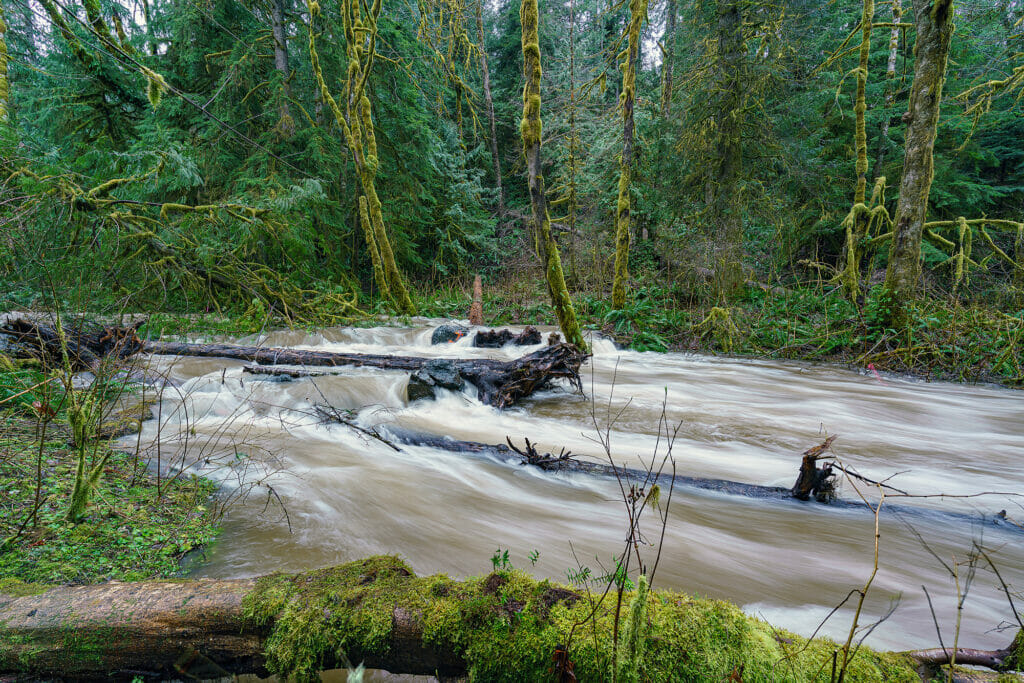
A swollen Little River in Washington’s Elwha River basin. Image: John McMillan/The Conservation Angler
The Little River supports numerous spawning steelhead, and juveniles are commonly observed, but the trap didn’t capture many outmigrants until 2020. It is plausible that Little River is too cold and unproductive to support large numbers of juvenile salmonids past age-1, and that once fish achieve a certain size or age, they emigrate from the stream to use other habitats. As an example, we have documented juvenile salmonids leaving Little River and then emigrating up into Indian Creek. Whatever the case, the abundance, size, and behavior of the fish appears to reflect differences in each stream’s unique environment.
Moving forward through an uncertain future, salmon and steelhead will need all the diversity they can muster to keep pace with climate change. They will also need access to a range of high-quality habitats. Our research in the Elwha River watershed suggests salmonids have the capacity to rapidly diversify and that different environmental conditions can promote such diversity, which may help bolster their resilience and portends positive outcomes for upcoming dam removals with similar goals.
John McMillan is the Science Director for The Conservation Angler.
Elwha River recovery continues to unfold. To learn more about the return of summer steelhead since the two dams were removed, watch our inspiring short film ‘Rising from the Ashes.’
This post originally appeared on Trout Unlimited.

